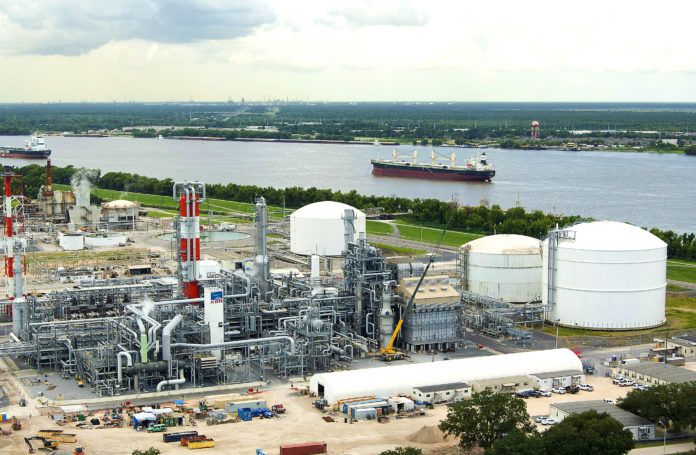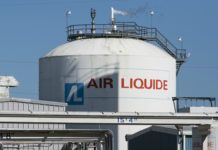JOINT EFFORT
In September, Gov. John Bel Edwards, Incitec Pivot Limited Chairman Paul Brasher and Cornerstone Chemical CEO Greg Zoglio dedicated the $1.025 billion production plant that includes the combined construction of Dyno Nobel’s $850 million ammonia plant with Cornerstone Chemical’s $175 million investment in upgrades and infrastructure. Incitec Pivot, based in Australia, is the parent company of Dyno Nobel, which developed the plant (above).
THE FINISHED PRODUCT
Construction of the Dyno Nobel project launched in August 2013, and ammonia production has now begun at the facility. The plant has an annual ammonia capacity of 800,000 metric tons and is located at Cornerstone Chemical’s 800-acre Fortier Manufacturing Complex on the west bank of the Mississippi River in Jefferson Parish, near the town of Waggaman. Dyno Nobel estimates construction employment peaked at 1,200 workers.
THE HANDOVER
EPC contractor KBR Inc. handed over the keys to the plant to Dyno Nobel and Cornerstone Chemical on Oct. 19 after ensuring the facility met and exceeded all performance parameters for throughput, efficiency and environmental performance.
THE TECHNOLOGY
The project is the first to use an integrated KBR solution of KBR’s Purifier™ ammonia technology along with KBR’s EPC services. It is one of the first onshore ammonia plants built in the United States in the past 20 years, and the first new grassroots ammonia plant in Louisiana in over 30 years. Additionally, the plant incorporates control technologies to produce the lowest air pollution of any ammonia facility to date.
SAFETY FIRST
KBR reports construction was completed with no lost time incident, while executing more than five million man hours.
IN A NUTSHELL
“This facility demonstrates the appeal of Jefferson Parish and Greater New Orleans as a location for industrial expansion, with a $1 billion-plus investment made by Dyno Nobel and Cornerstone Chemical,” said President and CEO Michael Hecht of GNO Inc. “These companies were able to take advantage of the region’s natural assets of the Mississippi River and supply of natural gas, as well as the financial savings created by our economic climate.”








